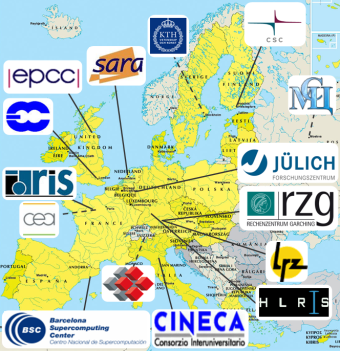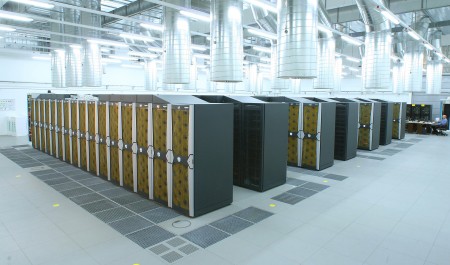 Therefore, for large-scale applications we are dependent on high-performance computing (HPC)
infrastructure providing also professional support from the different supercomputing centers
to use the approved computational resources efficiently.
Therefore, for large-scale applications we are dependent on high-performance computing (HPC)
infrastructure providing also professional support from the different supercomputing centers
to use the approved computational resources efficiently.

The simulation of a complete three-dimensional seismic wavefield with realistic assumptions of the material properties of the medium the waves are propagating through requires the solution of a system of partial differential equations. Depending on the desired frequency range of the simulated waves and the material properties their spatial wavelengths vary. In particular, high-frequency wave propagation in low-velocity material can reduce the wavelengths dramatically and the necessary resolution of the numerical mesh to discretize the physical model can lead to an enormous amount of mesh elements.
 Therefore, for large-scale applications we are dependent on high-performance computing (HPC)
infrastructure providing also professional support from the different supercomputing centers
to use the approved computational resources efficiently.
Therefore, for large-scale applications we are dependent on high-performance computing (HPC)
infrastructure providing also professional support from the different supercomputing centers
to use the approved computational resources efficiently.
We are currently participating in different computational projects giving us access to different HPC-Sites within Europe providing various hardware architectures:
Leibniz Rechenzentrum
DEISA - Distributed European Infrastructure for Supercomputing Applications
Shaheen - King Abdullah Universit of Science and Technology
For information on SeisSol on HPC-infrastructure see also:
DEISA_Newsletter_2010.pdf (p.1-2)
Last update: 02-04-2011
Department of Earth and Environmental Sciences (Geophysics), LMU
Department of Earth and Environmental Sciences (Geophysics), LMU
Waveform Tomography in Sedimentary Basins
DEISA_DIGEST_2010.pdf (p.32-34)